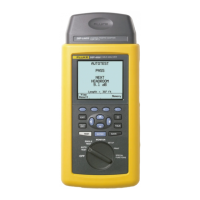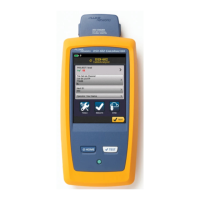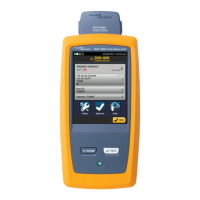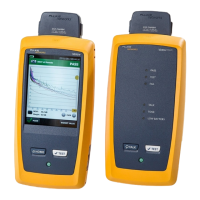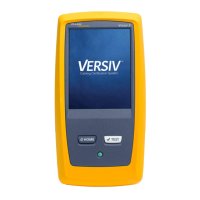Running Individual Tests
Monitoring Impulse Noise
4
4-23
Changing the Impulse Noise Threshold
You can set the impulse noise threshold to a value from 10 mV to 500 mV in
increments of 10 mV. The default noise threshold value is 270 mV.
To change the noise threshold, proceed as follows:
1. Turn the rotary switch to SETUP.
2. Use $ Page Down and D to find and highlight the impulse noise
threshold setting.
3. Press ! Choice.
4. Use # DEC or $ INC to change the threshold.
5. Press E to store the threshold setting.
Running the Impulse Noise Test
The impulse noise test is not valid for coaxial cabling because the level of noise on
coaxial cabling is negligible.
To monitor impulse noise, refer to Figure 4-6 and proceed as follows:
Note
To extend battery life, use the ac adapter/charger when monitoring
impulse noise for extended periods. While monitoring impulse noise,
the test tool’s automatic power-down function is disabled.
Note
Monitoring impulse noise without a remote connected may produce
unreliable test results.
1. Attach twisted pair link interface adapters to the remote and main units.
2. Turn on the main and remote units. Make the connections shown in Figure
4-6.
3. Turn the rotary switch on the main unit to MONITOR.
4. Use D to highlight Impulse Noise; then press T .
